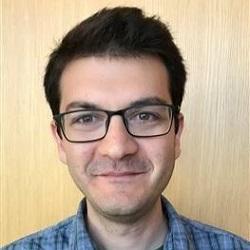I’m generally interested in the application of formal methods (computer science, computational) on complex multi-scale (biological) systems and especially in systems where there are emergent phenomena.
During my PhD, we developed a language called Chromar [4], in the tradition of notations for chemical reactions, for writing complex systems where discrete dynamics (creation/destruction of agents) can be combined with, for example, continuous dynamics in the same notation. For example, in a 1d array of cells where a chemical X is diffusing and new cells are added at the end of the array (via division etc.)
Note the observable (database-inspired function on the entire state of the system) counting the number of cells. Explicit functions of time are also allowed via fluents. The language has an implementation as an embedded language inside the general-purpose programming language Haskell (https://github.com/azardilis/Chromar/tree/develop).
We used this language to develop a whole-plant model and extend it to the population level to start answering ecological questions [3].
During my time at SLCU, I have been working on early flower development and the emergence of the sepals. We have worked on the molecular basis of this process with a Flower Atlas [1] that shows spatiotemporal and combinatorial gene-growth associations. I am also interested in the mechanical basis of this process and the role of the cytoskeleton as a mediator of mechanical signals (e.g. mechanical stress) in early flower development and in morphogenesis in general.


